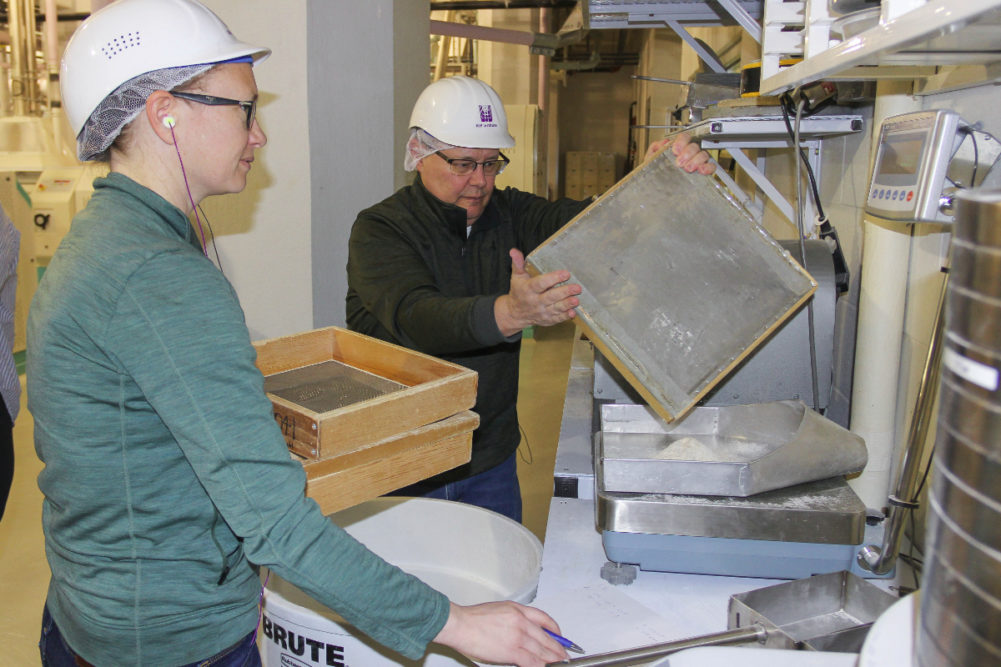MANHATTAN, KANSAS, US — To further the education of state wheat commissioners and staff the IGP Institute hosted a flour milling process course in late February.
A total of 10 participants representing four different states received an overview of the milling process through hands-on training and classroom discussions.
“Many factors play into the milling process and directly affect extraction and quality of the finished flour for baked goods,” said Shawn Thiele, associate director and flour milling and grain processing curriculum manager. “This all starts with wheat selections and through this course, the participants took an in-depth look at the US wheat classes and how each class reacts differently through the milling and baking processes.”
Participants engaged in classroom lectures and interactive discussions about competitor quality for US wheat globally, wheat cleaning and conditioning, the milling systems and equipment used, milling extraction and other math, flour functionality and other topics. They also spent time in the Hal Ross Flour Mill and KSU’s Shellenberger Hall milling and baking labs.
Participant Jason Middleton, regional manager with United Grain Corporation and Oregon Wheat Commissioners, wanted to get a better look at the entire milling process so he could better answer questions his customers may have.
“Ninety percent of wheat that comes from Oregon goes to export, so when we hear comments about falling numbers, I wanted to learn more about the part of it,” Middleton said.
Another participant, Nathan Larson, local farmer and Kansas Wheat Commissioner, felt that he had a broad idea of what goes into flour milling, but did not realize the extent of the process.
“You think you know how to grind wheat but didn’t realize how many types of grinding there are and how many types of flour you get from different grinding processes,” Larson said. “I also knew you used certain wheats for certain products but getting to actually go into the lab and see what you get when you bake different types of wheat into different types of products was an eye-opener.”





